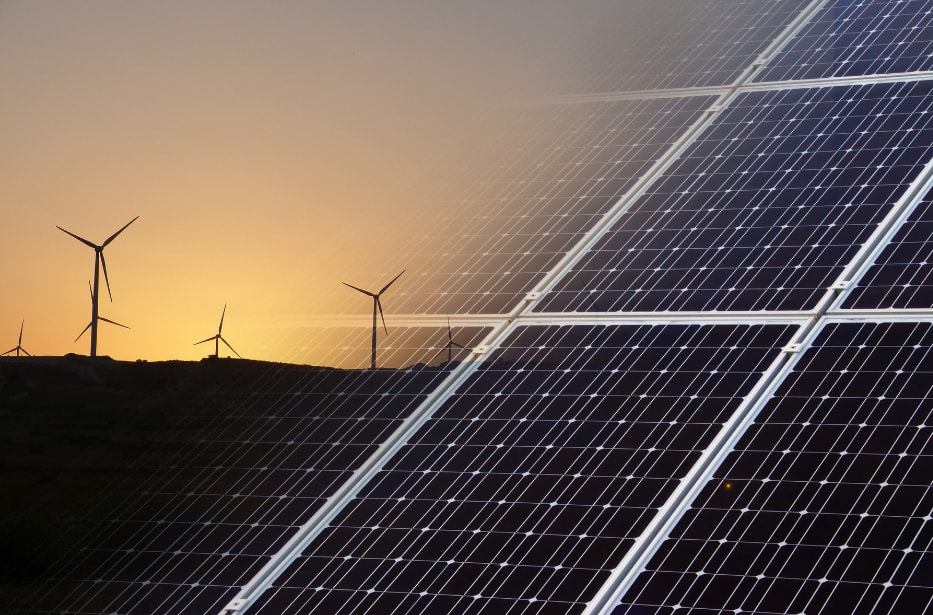
In the United States, we are fortunate to have a reliable energy distribution grid throughout most of the country, but where does the energy that is traveling through the millions of miles of wire come from? With the traditional utility grid, there are three main sources of energy: fossil fuels, renewables and nuclear. For microgrid applications we generally consider renewables and fossil fuels.
As the different renewable energy technologies continue to improve and produce more efficiently, the possibilities for how to utilize them increase. Organizations are looking to renewables for financial savings and decarbonization, and often resiliency as well. Regardless of what your goals are, there are multiple energy source options that can meet your needs.
Solar
Solar is the first renewable energy source that many think of, and for good reason; it is the one that is most noticeable when you see it and can take up a good deal of space. At utility scale, it is one of the least expensive per kilowatt hour (kWh) when calculated by total lifetime cost divided by total energy generation, but smaller installations see higher costs per watt of installed solar. If there is an open roof available without shade obstructions, panels can be installed there. If rooftop is not an option, then open space is needed for a ground mount installation. Carport solar is also an attractive application in certain circumstances.
Another consideration is that solar is not 100% dependable. The sun does not shine at night, and even during the day, there are times that solar may not produce, so while solar can be a key piece of a multi-source energy microgrid, it cannot serve as a standalone. There are also times when solar is generating more than can be consumed by a load. In this case, we have some options: we can stop converting the solar into electricity, or continue to convert the available solar into electricity and push the excess back to the grid. Luckily, these options are easily achieved with most inverters by adjusting software settings. In some situations, it may make sense to install a battery energy storage system to capture the excess energy for later use.
Wind and Water
Other renewable energy sources include wind and flowing water (hydro). To produce energy, the wind or water force blades to rotate, and this motion is converted into electricity through a generator. Similar to solar, wind turbines require space, and just as with the sun not always shining, the wind is not always blowing. Another challenge with turbines is that they are rotating masses. Considerations must be made for stopping the rotation, and what to do with excess energy when there is no load. Hydro power generation is only available in locations where flowing water is present.
Fossil Fuels
The most common energy sources are the many different fossil fuel options that are available. Most of the electrical distribution in the United States is generated at power plants which use fossil fuels such as oil, coal and natural gas; generators convert these different fuel sources into electricity.
Drawbacks of fossil fuels are many. There are limited quantities of these fuels available on earth, and the production and use of them create emissions which are harmful to the environment. These factors are driving research on additional fuel sources that can be produced instead of found naturally, such as renewable natural gas (RNG) and hydrogen. Methods to produce these renewable fuels are in early stages and are not yet able to scale cost effectively to completely replace fossil fuels. Regardless of the fuel source, the process looks similar; a generator converts the fuel into electricity.
Energy Choices
Although there is not a lengthy list of energy sources that are being utilized today, there are choices to make, and each has an impact. At EnTech Solutions, we can help you identify which energy sources are right for your site and are best to meet your sustainability, resiliency and financial goals. Contact us today to get started.
Thank you for checking out the EnTech Solutions blog. To stay up to date with technologies, developments and trends about clean energy, please subscribe.








